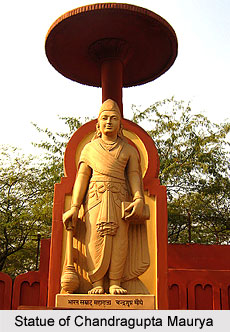 National Institute for Micro, Small and Medium Enterprises (ni-msme) was originally set up as Central Industrial Extension Training Institute (CIETI) in New Delhi in 1960 as a Department under the Ministry of Industry and Commerce, Government of India. It was decided to keep it free from the tardy and impeding administrative controls and procedures, so that the Institute can play a pivotal role in the promotion of small enterprise. Therefore the Institute was shifted to Hyderabad in 1962, and was renamed as Small Industry Extension Training (SIET) Institute. SIET, as it was known for over two decades later, is managed by Governing Council, appointed by the Government of India. To cope with the pressure of globalisation, the Government of India has enacted the MSMED Bill in the Indian Parliament, which became effective from 2nd October 2006. Accordingly, the Institute, in order to reflect the expanded focus of its objectives with name was rechristened as ni-msme from 11th April 2007 and re-designed its structure and organisation. It is an organisation of the Ministry of Micro, Small and Medium Enterprises (formerly Ministry of SSI & ARI), Government of India. The ni-msme (formerly as SIET) was registered at Hyderabad in Andhra Pradesh under Public Societies Registration Act I of 1350 Fasli with effective from 1st July 1962.
National Institute for Micro, Small and Medium Enterprises (ni-msme) was originally set up as Central Industrial Extension Training Institute (CIETI) in New Delhi in 1960 as a Department under the Ministry of Industry and Commerce, Government of India. It was decided to keep it free from the tardy and impeding administrative controls and procedures, so that the Institute can play a pivotal role in the promotion of small enterprise. Therefore the Institute was shifted to Hyderabad in 1962, and was renamed as Small Industry Extension Training (SIET) Institute. SIET, as it was known for over two decades later, is managed by Governing Council, appointed by the Government of India. To cope with the pressure of globalisation, the Government of India has enacted the MSMED Bill in the Indian Parliament, which became effective from 2nd October 2006. Accordingly, the Institute, in order to reflect the expanded focus of its objectives with name was rechristened as ni-msme from 11th April 2007 and re-designed its structure and organisation. It is an organisation of the Ministry of Micro, Small and Medium Enterprises (formerly Ministry of SSI & ARI), Government of India. The ni-msme (formerly as SIET) was registered at Hyderabad in Andhra Pradesh under Public Societies Registration Act I of 1350 Fasli with effective from 1st July 1962.
Objectives of NI-MSME
The primary objective of the ni-msme was to be the trainer of trainers. Subsequently, with the technological development and ever-changing market scenario, the involvement of the Society has undergone changes too. The scope of the Society has now expanded to consultancy, research, extension and information services.
Administration of NI-MSME
The affairs of the Society are managed, administered, directed and controlled through the Governing Council constituted by the Government of India as per Rule 22(a & b) of Rules and Regulations of the Society. The Secretary to the Government of India, The Ministry of MSME is the President of the Society and Chairman of the Governing Council.
The infrastructure and facilities at the NI-MSME campus are at par with international standards. NI-MSME has embraced technology in all its functions to keep pace with the tenor of the times and to make its services more efficient. State-of-the-art facilities, pleasant environs, proven methodologies supported by modern academic infrastructure, experienced faculty, expert consultants and resource persons and above all, decades of experience complemented by a modern and creative outlook, have given a new definition to the standard of services provided by the Institute. It is now recognised as being among the best training, research and extension facilities in the world. SIET was conferred the status of national institute by the Government of India with the charter of assisting in the promotion of Small Enterprises mainly by creating a pro-business environment. In 1984, the UNIDO had recognised SIET as an institute of meritorious performance under its Centres of Excellence Scheme subsequently, it was also accorded the national status in the same year and SIET Institute became nisiet.








